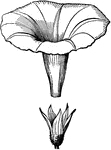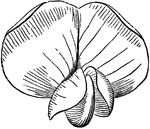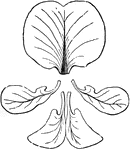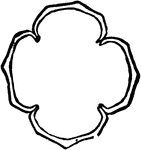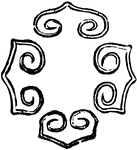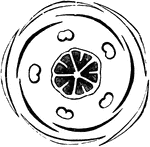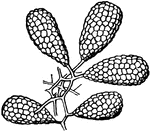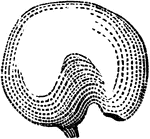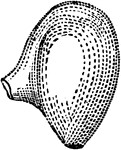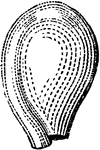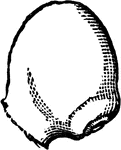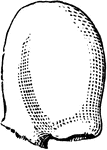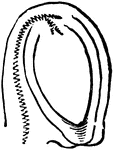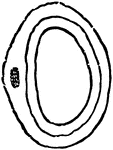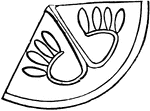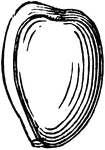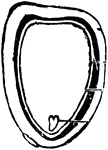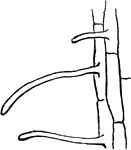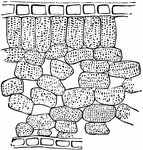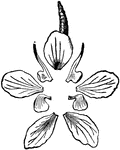
Larkspur
Its calyx and corolla displayed; the five large parts are the sepals; the four smaller, of two shapes,…
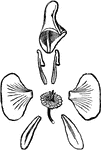
Monkshood
Its parts displayed: five speals, the upper forming the hood; the two lateral alike, broad and flat;…

Coreopsis
A slice of the head of flowers of a Coreopsis, with one tubular perfect flower (a) left standing on…
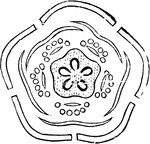
Linden
Diagram of a flower of Linden, showing the calyx valvate and corolla imbricate in the bud, etc.

Datura Stramonium
Upper part of corolla of Datura Stramonium in the bud; and below a section showing the convolution of…

Anther
Diagram of the lower part of an anther, cut across above, and the upper part of a leaf, to show how…

Orchis
One of the partial pollinia, torn up at top to show the grains (which are each composed of four).
Cherry Blossom
An inrolled small leaf, such as in double-flowered Cherry blossoms is often seen to occupy the place…
Pistil
A simple pistil (of Isopyrm), with ovary cut across; the inner (ventral) face turned toward the eye:…

Sandwort
Plan of a one-celled ovary of three carpel-leaves, with parietal placentae, cut across below, where…
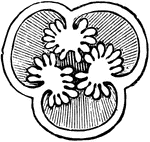
Hypericum graveolens
Cross section of an ovary of Hypericum graveolens with the placentae now separate and rounded.
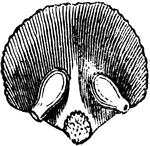
Pistil
A pistil, that is, a scale of the cone, of a Larch, at the time of flowering; inside view, showing its…

Arbor-Vitae
Branchlet of the American Arbor-Vitae, considerably larger than in nature, terminated by its pistillate…

Arbor-Vitae
One of the scales or carpels of the American Arbor-Vitae, the inside exposed to view, showing a pair…

Pistil
Pistil of Geranium or Cranesbill, ripe, with the five carpels splitting away from the long beak (carpophore),…
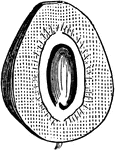
Blackberry
One of its component simple fruits (drupe) in section, showing the pulp, stone, and contained seed.

Seed
Seed of a Linden or Basswood cut through lengthwise, the parts lettered: a, the hilum or scar;…





